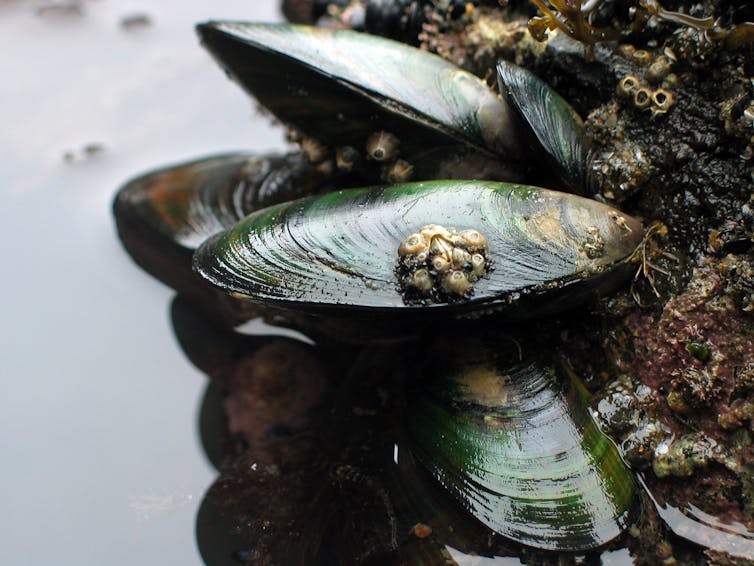Source: The Conversation (Au and NZ) – By Katharina Ruckstuhl, Associate Professor in Indigenous Economy, University of Otago
While the New Zealand government plans to review 28 pieces of legislation with a view to changing or repealing references to the Treaty of Waitangi, the science sector is embracing engagement with Māori and leading the way in linking science and Indigenous knowledge at a national scale.
We surveyed 316 researchers from research organisations across New Zealand on their engagement with Māori and their attitudes towards mātauranga Māori (Indigenous knowledge system). We found the majority agree engagement is important and mātauranga Māori is relevant to their research.
Our preliminary findings show most of the surveyed researchers engaged with Māori to some degree in the past and expect to keep doing so in the future. A majority agreed mātauranga Māori should be valued on par with Western science.
New Zealand is not alone in seeing Indigenous knowledge as complementary. Over the past few decades, several international projects engaged Indigenous knowledge systems to help solve pressing local and global problems. This includes traditional Aboriginal burning the reduces the risk of wildfires and sustainable water management.
But New Zealand has been at the forefront of developing a nationwide approach through the 2007 Vision Mātauranga policy. This science-mātauranga connection has given New Zealand a global lead in how to meaningfully and practically mobilise science and Indigenous knowledge at a national scale.
In contrast, the US only recently developed its national Indigenous science policy.
Merging knowledge systems
The merging of Indigenous and Western knowledge is particularly important in the high-tech innovation field. Here, New Zealand’s approach is starting to have real impacts, including supporting innovations and capabilities that would not have happened otherwise.
Through years of engagement with the research and innovation sector, Māori are increasingly expecting the sector to work differently. This means both engaging beyond the laboratory and being open to the possibility that science and mātauranga Māori together can create bold innovation. Examples include supporting Māori businesses to create research and development opportunities in high-value nutrition, or using mātauranga to halt the decline of green-lipped mussels in the Eastern Bay of Plenty.

Getty Images
Some media reports give the impression of a divided research community when it comes to mātauranga Māori. There have also been anecdotal reports suggesting scientists feel “pressured” to include “irrelevant” mātauranga Māori in science applications to win funding.
We questioned whether this divide was real and as widespread as was being reported. We investigated how non-Māori researchers view engagement and collaboration, in particular the role of mātauranga Māori within that engagement.
We examined the responses of the 295 non-Māori scientists in our survey and found 56% agreed mātauranga Māori should be valued on par with Western science. Only 25% disagreed. Moreover, 83% agreed scientists had a duty to consult with Māori if the research had impacts on them.
However, there was a significant gender difference: 75% of women compared to 44% of men agreed mātauranga Māori should be valued on par with science. Only 8% of women disagreed with that statement compared to 34% of men.
Gender differences
As social scientists researching New Zealand’s innovation system, these results quantified our earlier observations in two important respects.
First, it seems that exposing researchers to engagement with Māori communities may create a more open attitude to mātauranga Māori. A key aspect of the past few years has been to broaden the science sector’s engagement with various communities, including Māori.
The Vision Mātauranga policy has been explicit about this in the innovation sector and research and development areas. It appears likely this approach has, at least for some non-Māori researchers, created an openness to consider mātauranga Māori as an equivalent, although different, knowledge framework.
This policy push and Māori community pull has seen scientists in this survey overwhelmingly agree that Māori should be consulted about the impacts research may have on their communities.
Second, while we disagree with the anecdotal evidence that the science community as a whole is split when it comes to mātauranga and engagement with Māori, our results suggest there is a difference between genders. Women researchers in this survey are very positive when it comes to valuing mātauranga Māori, whereas men are relatively less so. We need to study this more deeply to find out why this might be the case.
Shifts in how researchers work
New Zealand’s science, research and innovation sector is in the middle of a structural transition with reviews of its priorities, policy, funding and organisational arrangements.
While central government re-arrangements can happen relatively quickly, the interface between the laboratory, community and industry can take years to adjust. Embedding new practices is complex and not easily done.
The 2007 Vision Mātauranga policy was initially slow, uneven and bumpy in its implementation. But our results suggest its impact has accelerated over the past few years. This includes recognising that working alongside different knowledge systems is valuable for innovation.
Whatever New Zealand’s current restructure of the science sector prioritises, the way researchers work has changed. New Zealand is now at the forefront of global shifts when it comes to links between Indigenous knowledge and science.
Anecdotes aside, accelerating the engagement between Māori and the science sector will be key to delivering the impact Māori and wider New Zealand expect.
![]()
Katharina Ruckstuhl received funding from Science for Technological Innovation, National Science Challenge.
Madeline Judge received funding from Science for Technological Innovation, National Science Challenge.
Urs Daellenbach received funding from Science for Technological Innovation, National Science Challenge.
– ref. Majority of NZ researchers see Māori Indigenous knowledge as relevant to their work – but there is a gender divide – https://theconversation.com/majority-of-nz-researchers-see-maori-indigenous-knowledge-as-relevant-to-their-work-but-there-is-a-gender-divide-241239









